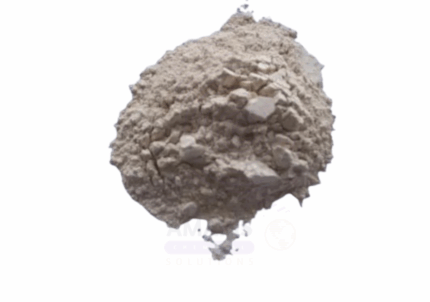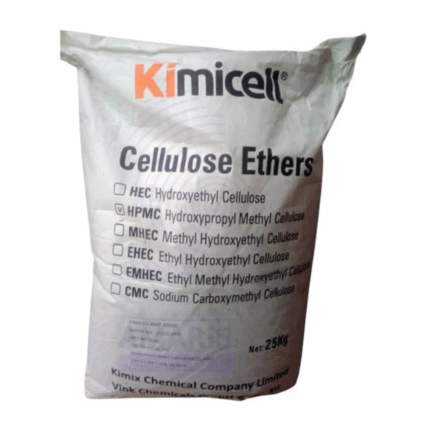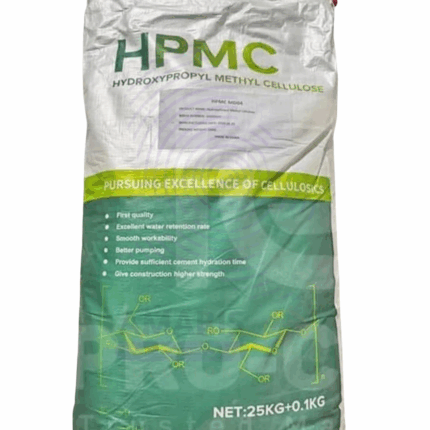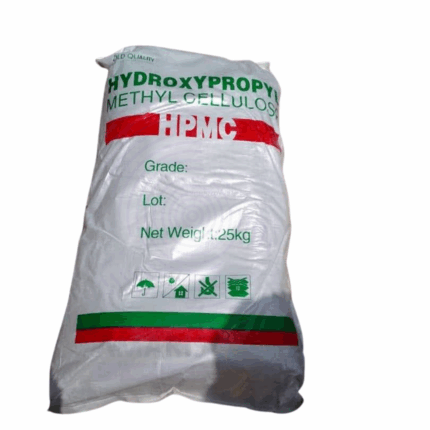Hytan RS
Whatsapp Order
Hytan RS is a premium reactive silicone-based release agent engineered for efficient mold release, surface protection, and lubrication across diverse industrial sectors. Its unique formulation ensures the formation of a durable, non-stick, thin silicone film that facilitates easy demolding and improves surface finish quality on metals, plastics, rubber, and composite substrates. Its robust performance enhances production efficiency by reducing cycle times and minimizing defects.
Description
Table of Contents
Toggle
Hytan RS
Primary Uses
- Manufacturing & Molding Industry
- Plastic Injection Molding: Provides excellent release for plastic parts, minimizing residue and mold fouling, thus improving cycle time and product quality.
- Rubber Molding: Effective in compression, transfer, and injection molding processes of rubber products to prevent sticking and enhance mold life.
- Composite Molding: Used in fiberglass, carbon fiber, and other composite molding for effortless release and high-quality surface finish.
- Metal Casting & Stamping: Prevents metal parts and tooling from sticking during casting or stamping operations, improving throughput and reducing equipment wear.
- Thermoforming & Vacuum Forming: Facilitates easy separation of thermoformed plastic sheets from molds, reducing defects and improving productivity.
- Surface Protection & Lubrication
- Protective Coatings: Forms temporary, water-resistant protective films on metal, plastic, and painted surfaces to prevent corrosion, oxidation, and contamination during storage or shipping.
- Lubrication: Acts as an anti-friction coating on mechanical parts, sliding surfaces, conveyor belts, and moving components to reduce wear and improve efficiency.
- Anti-blocking Agent: Applied on packaging films and sheets to prevent sticking or blocking during roll handling and processing.
- Automotive Industry
- Assembly Line Use: Releases molded automotive components, such as bumpers, interior panels, and seals, facilitating efficient manufacturing workflows.
- Paint Shop: Prevents adhesive residues and surface defects, aiding in paint application and surface finishing processes.
- Underbody & Engine Components: Used as a lubricant and protective coating for various automotive parts to reduce wear and corrosion.
- Electronics & Electrical Industry
- PCB Manufacturing: Applied as a release and anti-static agent in circuit board production, ensuring defect-free parts and easier handling.
- Cable & Wire Manufacturing: Used to lubricate extrusion dies and molds for smooth release of cables and wires.
Secondary Uses
- Textile Industry
- Used as a softening agent and lubricant in fabric finishing processes to improve fabric hand feel and processing efficiency.
- Acts as an anti-static agent reducing static cling in synthetic fibers.
- Paper Industry
- Applied in paper coating and finishing to improve slip and release properties during rolling and packaging.
- Food Industry
- When formulated with food-grade ingredients, used as a release agent in food packaging and processing machinery (subject to regulatory approvals).
- Marine Industry
- Provides release and anti-fouling properties on molds and surfaces exposed to water-based environments.
- Tool & Equipment Maintenance
- Acts as a protective lubricant for tools, dies, and molds during storage and transport to prevent rust and sticking.
- Construction & Building Materials
- Used in concrete formwork release to facilitate removal of forms without damaging surfaces or leaving residues
KEY PRODUCT FEATURES
1. Basic Identification Attributes
- Chemical Base: Reactive silicone polymer (polydimethylsiloxane derivative)
- Common/Trade Name: Hytan RS
- CAS Number: Proprietary formulation
- HS Code: 3402.19.00
- Synonyms: Silicone Release Agent RS; Reactive Silicone Mold Release
2. Physical & Chemical Properties
- Appearance: Clear to slightly hazy liquid
- Odor: Mild silicone odor
- Solubility: Insoluble in water, soluble in organic solvents
- Flash Point: >100 °C (closed cup)
- Viscosity: Low to medium
- Stability: Chemically stable; forms durable film on curing
3. Safety & Hazard Attributes
- GHS Classification: Low hazard, avoid inhalation of mists
- Toxicity: Low toxicity, non-irritant under normal use
- Exposure Limits: No specific limits, follow good hygiene practices
4. Storage & Handling Attributes
- Store sealed in cool, dry place, away from heat and sunlight
- Shelf Life: 12-24 months
- Use PPE: Gloves, goggles, ventilation
5. Regulatory & Compliance Attributes
- Complies with OSHA, EPA standards
- Suitable for regulated manufacturing environments
6. Environmental & Health Impact
- Biodegradability: Persistent but inert
- Ecotoxicity: Low acute aquatic toxicity
- Bioaccumulation: Not expected
- Carcinogenicity/Mutagenicity: Not classified
SAFETY HANDLING PRECAUTIONS
Safety Handling Precautions
- PPE: Gloves, goggles, dust mask or respirator for mist inhalation
- Avoid prolonged skin contact and inhalation of aerosols
- Use in well-ventilated areas
First Aid Measures
- Inhalation: Fresh air; medical attention if needed
- Skin: Wash with soap and water; medical attention if irritation persists
- Eyes: Rinse 15 min; medical help if irritation continues
- Ingestion: Rinse mouth; seek medical advice if large amounts ingested
Firefighting Measures
- Fire Hazard: Combustible under fire conditions
- Extinguishers: Foam, dry chemical, CO₂, water spray
- Precautions: Protective gear for firefighters
- Decomposition: Carbon and silicon oxides
Related products
Acrytan SN
Cellulose Ether
Cellulose ether refers to a group of chemically modified cellulose derivatives where hydroxyl groups on the cellulose backbone are substituted with ether groups such as methyl, hydroxyethyl, or carboxymethyl groups. These modifications improve solubility, viscosity, and film-forming properties while maintaining biodegradability and non-toxicity. Cellulose ethers are white to off-white powders or granules that dissolve in water to form viscous, stable solutions. They are widely used as thickeners, binders, stabilizers, and film formers in industries such as construction, pharmaceuticals, cosmetics, food, and paper.
HPMC Vivapharm E50
HPMC Vivapharm is a high-quality, pharmaceutical-grade hydroxypropyl methylcellulose polymer widely used as an excipient and functional ingredient. It appears as a fine, white to off-white, odorless powder with excellent solubility in cold water and forms clear, viscous solutions. This cellulose ether derivative offers excellent film-forming, thickening, emulsifying, and controlled-release properties. Vivapharm E50 is prized in pharmaceutical, food, and cosmetic industries for its versatility, stability, and safety profile.
Hydroxypropyl Methylcellulose
Hydroxypropyl Methylcellulose HPMC, also known as hypromellose, is a semi-synthetic, non-ionic cellulose ether derived by chemically modifying cellulose through methylation and hydroxypropylation. It is a white to off-white, odorless, tasteless powder that dissolves in cold water to form clear, viscous solutions. HPMC is renowned for its thickening, film-forming, emulsifying, and controlled-release properties. It is widely used in pharmaceuticals, food, cosmetics, construction, and industrial applications due to its safety profile, versatility, and compatibility with various ingredients.
Hylac U94
Hylac is a high-performance, water-based acrylic polymer emulsion widely used as a binding agent and adhesive in coatings, paints, sealants, and construction materials. It offers excellent film formation, adhesion, flexibility, and weather resistance. Hylac U94 is formulated for superior compatibility with a wide range of fillers, pigments, and additives, making it ideal for both industrial and decorative applications. It delivers enhanced durability, water resistance, and color retention, suitable for indoor and outdoor uses.
Hypro 88
Hypro is a high-quality, non-ionic, water-soluble cellulose ether used primarily as a thickening, suspending, and stabilizing agent. It is derived from cellulose and chemically modified to achieve excellent water retention, rheological control, and film-forming properties. Hypro 88 is widely valued in industries such as construction, paints and coatings, adhesives, pharmaceuticals, and personal care for its ability to enhance texture, improve workability, and stabilize formulations.
Textile Stiffner
Textile Stiffner is a finishing agent formulated to impart stiffness, body, and shape retention to fabrics. It is typically composed of natural or synthetic polymers such as starch derivatives, polyvinyl acetate, acrylic resins, or modified cellulose. Applied during the finishing process, textile stiffeners enhance the handle, drape, and durability of textiles, making them suitable for a wide range of applications from fashion to industrial fabrics.


 Preservatives(food)
Preservatives(food) Flavor Enhancers
Flavor Enhancers Acidulants
Acidulants Sweeteners
Sweeteners Antioxidants
Antioxidants Colorants(food)
Colorants(food) Nutraceutical Ingredients (food)
Nutraceutical Ingredients (food) Nutrient Supplements
Nutrient Supplements Emulsifiers
Emulsifiers
 Collectors
Collectors Dust Suppressants
Dust Suppressants Explosives and Blasting Agents
Explosives and Blasting Agents Flocculants and Coagulants
Flocculants and Coagulants Frothers
Frothers Leaching Agents
Leaching Agents pH Modifiers
pH Modifiers Precious Metal Extraction Agents
Precious Metal Extraction Agents
 Antioxidants(plastic)
Antioxidants(plastic) Colorants (Pigments, Dyes)
Colorants (Pigments, Dyes) Fillers and Reinforcements
Fillers and Reinforcements Flame Retardants
Flame Retardants Monomers
Monomers Plasticizers
Plasticizers Polymerization Initiators
Polymerization Initiators Stabilizers (UV, Heat)
Stabilizers (UV, Heat)
 Antifoaming Agents
Antifoaming Agents Chelating Agents
Chelating Agents Coagulants and Flocculants
Coagulants and Flocculants Corrosion Inhibitors
Corrosion Inhibitors Disinfectants and Biocides
Disinfectants and Biocides Oxidizing Agents
Oxidizing Agents pH Adjusters
pH Adjusters Scale Inhibitors( water)
Scale Inhibitors( water)
 Antioxidants(cosmetic)
Antioxidants(cosmetic) Emollients
Emollients Fragrances and Essential Oils
Fragrances and Essential Oils Humectants
Humectants Preservatives
Preservatives Surfactants(cosmetic)
Surfactants(cosmetic) Thickeners
Thickeners UV Filters
UV Filters
 Fertilizers
Fertilizers Soil Conditioners
Soil Conditioners Plant Growth Regulators
Plant Growth Regulators Animal Feed Additives
Animal Feed Additives Biostimulants
Biostimulants Pesticides (Herbicides, Insecticides, Fungicides)
Pesticides (Herbicides, Insecticides, Fungicides)
 Active Pharmaceutical Ingredients (APIs)
Active Pharmaceutical Ingredients (APIs) Excipients
Excipients Solvents(pharmaceutical)
Solvents(pharmaceutical) Antibiotics
Antibiotics Antiseptics and Disinfectants
Antiseptics and Disinfectants Vaccine Adjuvants
Vaccine Adjuvants Nutraceutical Ingredients (pharmaceutical)
Nutraceutical Ingredients (pharmaceutical) Analgesics & Antipyretics
Analgesics & Antipyretics
 Analytical Reagents
Analytical Reagents Solvents(lab)
Solvents(lab) Chromatography Chemicals
Chromatography Chemicals Spectroscopy Reagents
Spectroscopy Reagents microbiology-and-cell-culture-reagents
microbiology-and-cell-culture-reagents Molecular Biology Reagents
Molecular Biology Reagents Biochemical Reagents
Biochemical Reagents Inorganic and Organic Standards
Inorganic and Organic Standards Laboratory Safety Chemicals
Laboratory Safety Chemicals Specialty Laboratory Chemicals(Special Laboratory Equipment)
Specialty Laboratory Chemicals(Special Laboratory Equipment)
 Demulsifiers
Demulsifiers Hydraulic Fracturing Fluids
Hydraulic Fracturing Fluids Scale Inhibitors(oil)
Scale Inhibitors(oil) Surfactants(oil)
Surfactants(oil) Drilling Fluids
Drilling Fluids
 Dyes and Pigments
Dyes and Pigments Bleaching Agents
Bleaching Agents Softening Agents
Softening Agents Finishing Agents
Finishing Agents Antistatic Agents
Antistatic Agents
 Admixtures
Admixtures Waterproofing Agents
Waterproofing Agents Sealants and Adhesives
Sealants and Adhesives Curing Compounds
Curing Compounds Concrete Repair Chemicals
Concrete Repair Chemicals Anti-Corrosion Coatings
Anti-Corrosion Coatings
 Surfactants(cleaning)
Surfactants(cleaning) Builders
Builders Enzymes
Enzymes Solvents (Cleaning)
Solvents (Cleaning) Fragrances
Fragrances
 Electronic Chemicals
Electronic Chemicals Catalysts
Catalysts Lubricants
Lubricants Photographic Chemicals
Photographic Chemicals Refrigerants
Refrigerants Automotive chemicals
Automotive chemicals Pyrotechnic Chemicals
Pyrotechnic Chemicals
 Biodegradable Surfactants
Biodegradable Surfactants Bio-based Solvents
Bio-based Solvents Renewable Polymers
Renewable Polymers Carbon Capture Chemicals
Carbon Capture Chemicals Wastewater Treatment Chemicals
Wastewater Treatment Chemicals
 Pigments
Pigments Solvents(paint)
Solvents(paint) Specialty Coatings
Specialty Coatings Binders/Resins
Binders/Resins Additives
Additives Driers
Driers Anti-Corrosion Agents
Anti-Corrosion Agents Functional Coatings
Functional Coatings Application-Specific Coatings
Application-Specific Coatings
 Fresh Herbs
Fresh Herbs Ground Spices
Ground Spices Whole Spices
Whole Spices Spice Blends
Spice Blends Dried Herbs
Dried Herbs
 Leavening Agents
Leavening Agents Dough Conditioners
Dough Conditioners Flour Treatments
Flour Treatments Fat Replacers
Fat Replacers Decoratives
Decoratives Preservatives(baking)
Preservatives(baking)
 Plasticizers & Softeners
Plasticizers & Softeners Reinforcing Agents
Reinforcing Agents Adhesion Promoters
Adhesion Promoters Vulcanizing Agents
Vulcanizing Agents Antidegradants
Antidegradants Blowing Agents
Blowing Agents Fillers & Extenders
Fillers & Extenders Accelerators & Retarders
Accelerators & Retarders
























